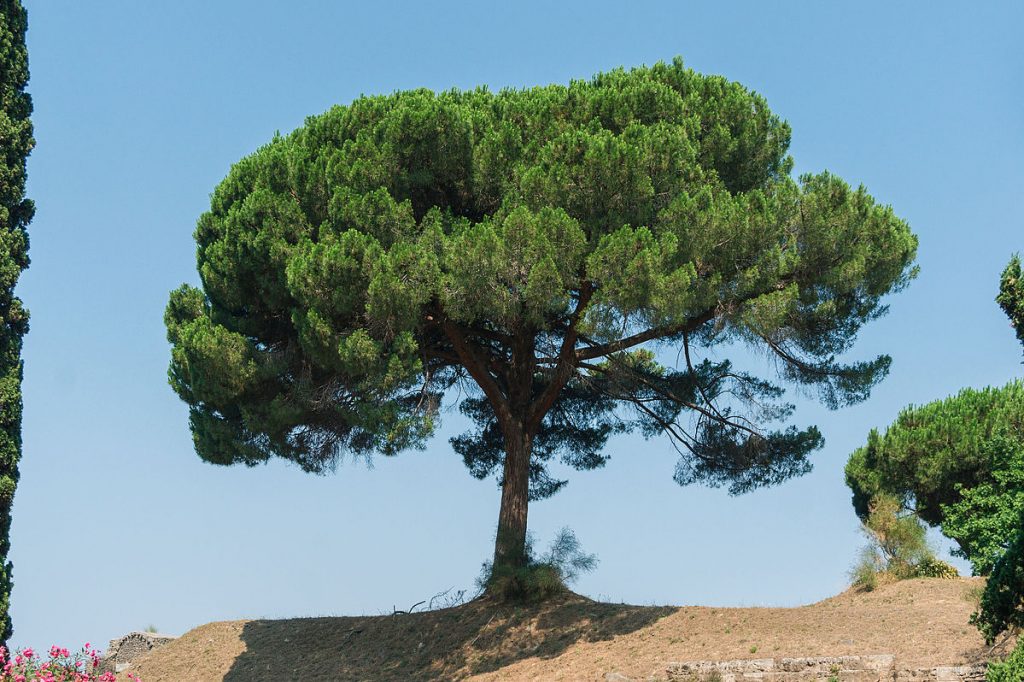
Also known as umbrella pine and parasol pine, this coniferous evergreen tree is native to the Mediterranean region including southern Europe, Israel, Lebanon and Syria. It is a member of the pine family, Pinaceae, that also includes spruce, hemlock, and larch. Stone pine grows in Pompei today and carbonized remains found in ancient Pompeii indicate that it grew there at the time of the eruption. Wall paintings in the House of Venus Marina and House of Romulus and Remus feature images of umbrella pine and suggest that the ancient Pompeians appreciated the attractive nature of the tree. Photo Credit Jebulon Wikimedia Commons

Description: The trees may grow 30-80′ tall but usually no taller than 65′. They have a thick trunk with red-brown fissured bark and are branched to form a wide flat canopy at maturity. Small blue green juvenile needles are produced singly for the first 5-10 years and when the plant is injured, but are replaced gradually by stiff mid-green needles 4 to 8″ long and produced in bundles of two. Rounded-ovoid male and female cones are produced on the same tree and are shiny light brown, about 3-6″ long, and have blunt scales. Fertilized female cones produce edible nuts three years after being fertilized. Each nut is about 3/4″ long, pale brown with a black powdery coating that easily rubs off, and has a ineffectual wing. Stone pine has been cultivated for over 6,000 years for its pine nuts (but are replaced in US cuisine by the nuts of pinyon pine, P. edulis.)
Size: 30-80′ H 26′ W
Light: Full sun
Soil: Average, dry to medium moist, well-drained
Hardiness: Zones 7-11